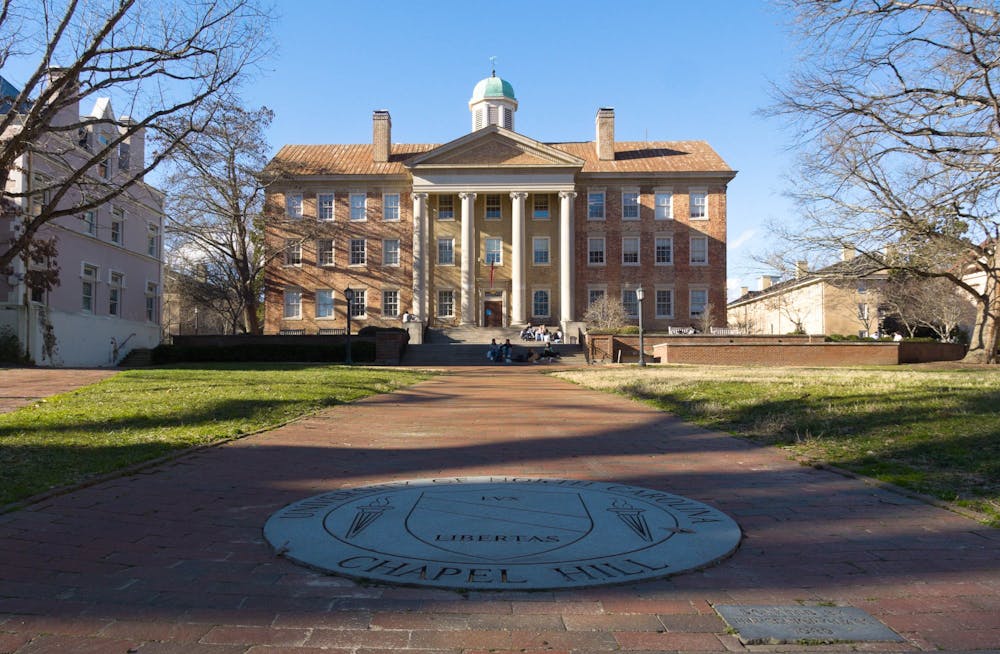Individual deans and vice chancellors have been given discretion to determine how cuts will be made within their units, Becci Menghini, vice chancellor for human resources and equal opportunity and compliance, said.
Guskiewicz outlined in his Jan. 15 announcement eight budget reduction principles that the leaders must abide by when considering cuts. These include making cuts strategically, rather than across the board, making them considerate to revenue generation and making them focused on reducing senior level administrators.
“There will be no exceptions to the budget mitigation measures — administrative units included,” Nate Knuffman, interim vice chancellor for finance and operations, said.
How we got here
UNC’s over-$100 million budget deficit cannot be pinpointed to one cause.
But the struggles started following the 2008 financial crisis and the continued effects of the dot-com bust and state budget cuts, Blouin said at the January Faculty Council meeting.
Large spending and investment in new buildings and programs, as well as legal fees and faculty retention, have also been a primary factor, Knuffman said at a January presentation to the Board of Trustees' Finance, Infrastructure and Audit Committee.
Jenna Robinson, president of the James G. Martin Center for Academic Renewal, said UNC’s level of unnecessary spending on administrators is one of the reasons she believes the deficit kept increasing.
“At UNC-Chapel Hill, administrators outnumber faculty by more than 2 to 1,” Robinson said. “I think that is indicative of too much spending on non-instructional personnel.”
She said UNC’s proposed budget cuts were not a surprise.
“I think that the size of these budget cuts means that UNC will be in better shape in the future,” Robinson said. “They’re not the kind of drastic cuts we see when a University is really in trouble. These cuts are just dealing with a problem that exists in a practical way.”
While the University aims to address its financial problems through cuts to spending, a coalition of campus workers, graduate students and faculty put forth their own solution — a four-point plan called Another UNC Is Possible. Instead of traditional austerity measures, this plan calls for four alternative actions:
To get the day's news and headlines in your inbox each morning, sign up for our email newsletters.
- Roll back the 2013 tax changes
- Withdraw funds from the state’s Rainy Day Fund
- Divest from fossil fuels
- Withdraw additional funds from campus endowments
Continued financial impacts
UNC continues to face a $200 million deficit due to the pandemic this fiscal year, as well as an $850 million backlog in deferred maintenance.
Knuffman said the University received $25.5 million from the federal COVID-19 relief passed in December, part of which can be used to mitigate pandemic impacts and targeted emergency relief to students.
UNC was previously distributed $52 million from the spring 2020 federal COVID-19 relief that was in part allocated for research, student support and testing, Knuffman said. But none of this funding can be used toward UNC’s structural deficits.
Blouin said that it is also unclear how state appropriations may change as a result of the pandemic, so it is crucial to get the University on a good path forward.
“We do know that COVID-19 is going to have an additional impact on this University,” Blouin said. “We also know that COVID-19 is likely to have an impact on the state and not necessarily this fiscal year but in the fiscal year after.”
He said if the cuts are not done now, the University will be in a worse position down the road.
“This isn't going to be easy, but I feel confident that we can get through this together,” Guskiewicz said. “It's the responsible thing to do for the future of our University, and in doing this we will aim to protect our mission and our people.”
university@dailytarheel.com



